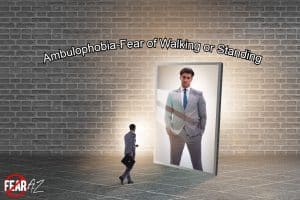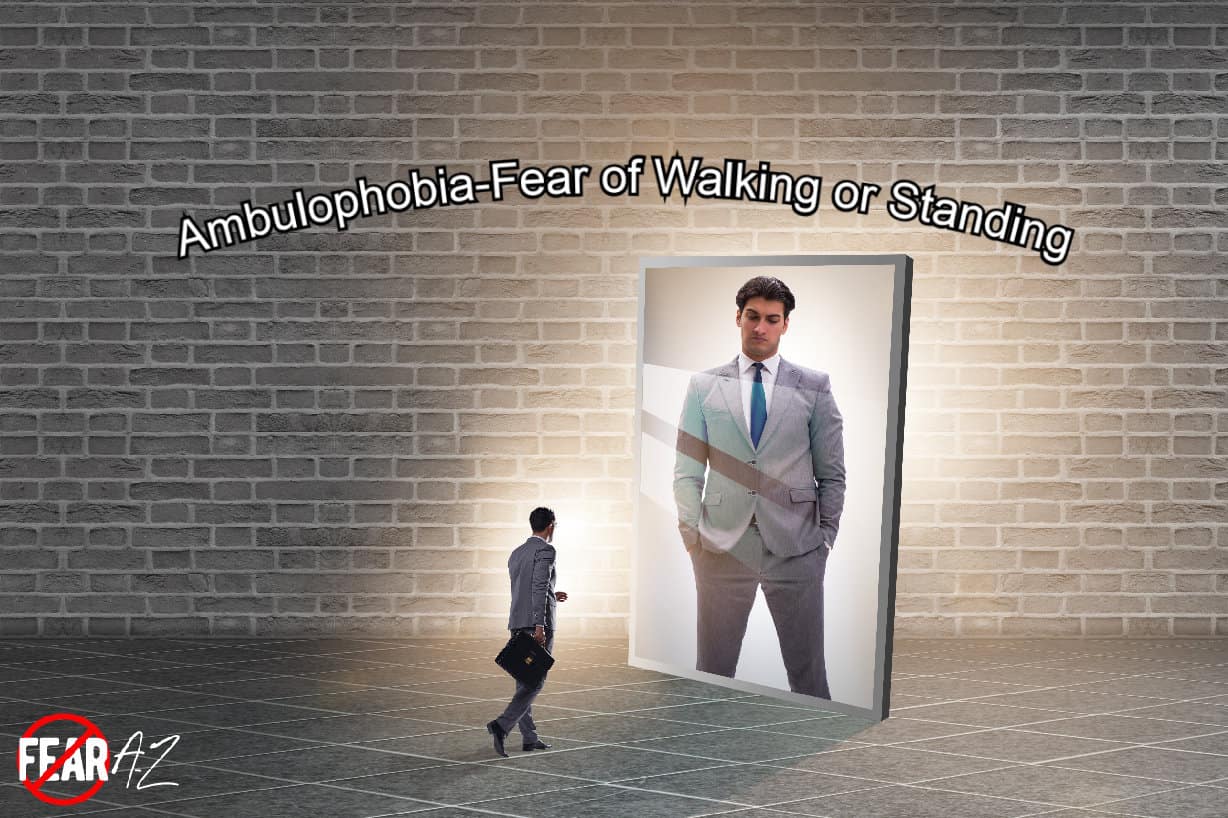Share This Article
Excessive Fear of Walking or Standing Is Serious to Some
The fear of walking or standing is called ambulophobia, or ambulomophobia. It is a type of specific phobia characterized by an excessive and irrational fear of walking or standing. People with this phobia experience extreme anxiety and panic when faced with the idea of walking or standing, and may avoid situations where walking or standing is required.
This somewhat rare phobia may seem strange to some, as most rare phobias do, but having an excessive, compulsive fear of an action that is so necessary in daily life will make moving through your day almost impossible. It may even border on a complete disability. Let’s dig into this troublesome and unnerving phobia.

Causes of Ambulophobia
The excessive fear of walking or standing can be caused by a variety of factors. Some possible causes include:
- Past traumatic issues: If someone has had a traumatic experience while walking or standing, such as a fall or an injury, they may develop a fear of walking or standing as a result.
- Medical conditions: Some medical conditions can make walking or standing difficult or uncomfortable, such as balance disorders or chronic pain. In these cases, the fear of walking or standing may be a secondary fear related to the underlying medical condition.
- Learned behavior: Sometimes, people may develop a phobia of walking or standing as a result of learned behavior. For example, if someone has been told that they should avoid walking or standing due to a medical condition, they may develop a fear of walking or standing as a result.
- Existing mental health conditions: Ambulophobia can be a symptom of an underlying mental health condition, such as panic disorder, depression, or PTSD. These conditions can manifest into a full phobia.
- Genetics: Some research suggests there may be a genetic component to certain phobias and anxiety disorders. So, if someone has a family history of anxiety disorders or phobias, they may be more likely to develop a fear of walking or standing.
Symptoms of Ambulophobia
Common symptoms of ambulophobia, or the fear of walking or standing, include:
- Extreme anxiety or panic when faced with the idea of walking or standing
- Physical symptoms of anxiety, such as a rapid heartbeat, sweating, and difficulty breathing
- Avoidance of situations where walking or standing is required, such as going to work or school
- Difficulty functioning in situations where walking or standing is required
- Difficulty sleeping or concentrating due to thoughts of walking or standing
Treatments for Ambulophobia
Self-Help
Here are a few self-help strategies for managing ambulophobia, or the fear of walking or standing:
- Gradual exposure: Gradual exposure to the feared activity (in this case, walking or standing) can be an effective way to help reduce fear and anxiety. Start with small, manageable steps and gradually increase the difficulty level.
- Relaxation techniques: Relaxation techniques, such as deep breathing, progressive muscle relaxation, and meditation, can help reduce anxiety and stress. Practicing these techniques regularly can help manage anxiety related to walking or standing.
- Mindfulness: Mindfulness practices, such as yoga or tai chi, can help a person focus on the moment and reduce the impact of negative thoughts and fears related to walking or standing.
- Positive self-talk: Try to focus on positive thoughts and self-talk when faced with the idea of walking or standing. Challenge negative thoughts and beliefs, and try to replace them with more positive and realistic thoughts.
Keep in mind that these self-help strategies may not be enough on their own to manage the intense fear ambulophobia can cause. It very well may be necessary to seek professional help, such as talk therapy or in some cases medication.
Professional Treatment for Ambulophobia
Professional treatment for ambulophobia typically involves one or more of these common therapies:
- Cognitive behavioral therapy (CBT): Helps individuals understand and change their thought patterns and behaviors that contribute to their fear.
- Medication: May be used to help manage anxiety symptoms during treatment.
- Exposure therapy: When used in a controlled setting, can help the person face their fears and reduce anxiety.
- Physical therapy: If you have a medical condition that causes pain or discomfort when walking, working with a physical therapist may be the needed first step.
- Talk therapy: May be the most convenient and effective tool for easing the discomfort. This therapy can be done in the privacy of your own home.
If you think you may have ambulophobia, walk right over and speak with your mental health professional today. Get a proper diagnosis and treatment plan. With the right help, it is possible to manage or even overcome this phobia and improve your quality of life. Walk, stand, and live your life free of excessive fear.




